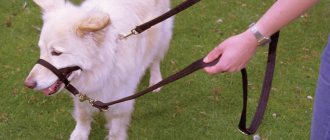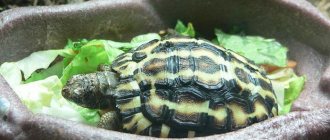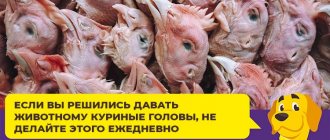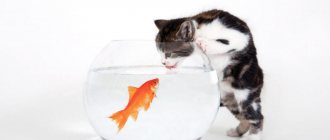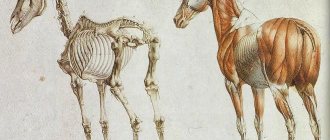Experienced dog breeders and ordinary owners of four-legged barking pets disagree about the inclusion of peas in their dogs’ diet, as well as other legumes.
Most are inclined to completely exclude this product. The reason for this is the poor digestibility of peas by dogs . But there are those who have been feeding their pets legumes for many years without harming the animals’ health. However, peas are a rather controversial product.
Why shouldn't it be given to pets?
The structure of the human digestive system is radically different from that of a dog. Pets have significantly fewer enzymes that perform the digestive function than people do. Having heavy food in your dog's daily diet can have serious consequences.
Newly acquired diseases can become chronic and severe. A dog's digestive system has a very difficult time processing peas. This is accompanied by severe flatulence.
At the beginning, bloating and gas production are not of a threatening nature. It brings discomfort to others only due to the presence of an unpleasant odor.
But over time, flatulence begins to cause pain to the dog , accompanied by vomiting and loose stools. Calla lilies with blood streaks are observed. Fermentation that appears in the stomach will favor the development of pathogenic flora in the digestive tract. It is also possible to develop candidiasis. The animal loses its appetite and playfulness.
Exceptions
There are a number of situations in which you can let your dog eat fresh peas:
- no kidney problems in the dog;
- peas should be without additional seasonings to enhance the taste;
- It is necessary to ensure that the dog does not eat the bean pods.
Kidneys
If a dog has serious kidney problems, it should absolutely not be fed peas, even in cooked form . The vegetable contains purines. These are substances that provoke increased production of uric acid. If the dog continues to be fed peas constantly, then its unhealthy kidneys will not be able to cope with large volumes of uric acid.
Choosing porridge
Despite the fact that the pet food market is replete with various products, many owners prefer to give their German Shepherd natural products prepared with their own hands at home. Modern canned food and dry food contain a balanced amount of nutrients, vitamins and minerals, but dog breeders still prefer to give their puppy or adult shepherd boiled meat. They know which cereals mixed with vegetables will bring maximum benefit to their pet.
In order for the porridge to be healthy for the dog, it can be prepared using a special technology, choosing the most suitable cereal for the German Shepherd. Buckwheat and rice are considered to be the best for feeding; you can also give crushed oatmeal, barley, and wheat porridge. The most suitable option may be to prepare assorted cereals.
To avoid negative reactions such as digestive system disorders or allergies, you should try giving your puppy or adult dog one type of porridge for several days. If there are no negative consequences, then this cereal can be safely introduced into the daily diet. Porridge, as a source of large amounts of fiber and carbohydrates, should make up up to 40% of a dog’s diet.
Dogs most like porridges with various types of meat, so dog breeders add:
- Beef, which has less fat than pork and contains more nutrients than poultry.
- Chicken necks. They are inexpensive, filling, and their bones are not dangerous for an adult dog.
- Offal. Cook them quickly, they are nutritious, but cannot completely replace regular meat.
Seasonings
When deciding to give your pet peas, you need to monitor its quality and composition if it is a purchased frozen vegetable mixture. Ideally, these should be fresh peas from the pods or fresh frozen. It must be unsalted and without additional seasonings. Any spice will become poison for a dog.
Attention! Everything is useful in moderation. Therefore, peas should be used with extreme caution. Preferably as a reward and treat. It is necessary to start with tiny portions, gradually accustoming the animal to such food.
You can give some canned peas. But it should be remembered that manufacturers often add all sorts of chemicals to ensure that the finished product lasts longer. Such elements can be harmful to the dog's health.
Pods
You should be especially careful when offering dogs green peas, which themselves do not contain any toxic elements, but if swallowed, can scratch the delicate walls of the pet’s esophagus .
Since they exude no less aroma than the peas themselves, there is a high probability that the animal will begin to eat the pointed pods along with the peas.
Veterinarians, in certain situations, give recommendations on introducing pea dishes into a dog’s diet. The following specific circumstances contribute to this:
- puppies were taken from the bitch too early;
- Asian Shepherds have skin problems caused by metabolic disorders that must be overcome;
- it is necessary to defeat the disease that deprives the animal of fur;
- the dog is very exhausted and needs to be restored quickly.
In the form of soup
Soup with this legume, consumed by people, is absolutely unacceptable for dogs . In addition to hard-to-digest peas, the classic soup contains smoked meats and potatoes. It is strictly forbidden to give these products separately, and their simultaneous use can cause irreparable damage to the dog’s health.
It is strictly forbidden to feed dogs pea soup prepared according to the classic recipe. You can please your pet with a dietary version of the soup :
- carrot;
- water;
- 100 g peas;
- celery (root).
The legumes should first be soaked well in cold water for 24 hours.
Pea soup
Classic pea soup, which is served on the dinner table for humans, is strictly contraindicated for dogs . Standard soup options using potatoes, smoked meats and meat will be a real test for animals. Potatoes themselves are harmful when boiled because they cause obesity. Meat, like peas, contains a lot of proteins. Eating these two foods at the same time will cause irreparable damage to the dog’s intestines with subsequent complications.
If you want to treat your pet to pea soup, you will have to prepare a dietary version of the dish that contains the following components:
- Water.
- A couple of carrots.
- Half a glass of peas.
- Celery root.
When cooking a dish, it is highly recommended to pre-soak the peas in water. Using a concentrated analogue can lead to problems.
Porridge
You can also give your dog puree or porridge. The pea content in them will be more concentrated. But to facilitate digestion, you need to prepare dietary porridge or puree :
- carrot;
- celery;
- paprika;
- soaked peas.
Cook for an hour until pureed.
Important! The first meal of pea-based meals should be given to the dog in small quantities. Then monitor the body’s reaction and eliminate the appearance of unwanted flatulence. If the dog has coped with digestion well, then the portion can be gradually increased.
In what cases is it recommended to eat pea food?
In most cases, even the correct supply of food with an acceptable concentration of legumes does not provide any benefit to animals. In some situations, veterinarians may recommend adding peas to food as a prevention or treatment for a specific disease:
- Use in diet for weaned puppies.
- Use in dietary nutrition for Central Asian Shepherds who have metabolic skin disease. In this case, it is recommended to consume pea porridge for a period of 3 weeks without adding meat.
- Eating for problems with the coat, which is explained by the high sulfur content.
As practice shows, animals eat peas with pleasure if they have the opportunity to reach them. However, there are many specifics regarding its use due to the characteristics of the digestive system of dogs. The most convenient analogy: mushrooms in the human diet. Only some types of mushrooms are edible in small quantities and when properly processed. As a result, if the owner takes the responsibility to include peas in the pet’s diet, then it is first important to find out about its compatibility with other food products for dogs.
Help an animal
Peas are a treat for dogs, like candy is for small children. And that's why he attracts them so much. An untrained dog can independently find the source of the smell of its favorite vegetable. If your pet has eaten too much, the body’s reaction will follow :
- the animal whines;
- the abdomen swells, tension is felt when pressed;
- vomit;
- diarrhea;
- no appetite;
- blue-gray shade of gums.
If symptoms are detected, contact your veterinarian immediately. Before the doctor arrives, give the dog an absorbent or carminative drug (activated carbon, Enterosgel, Polysorb, Smecta). After examination, in case of severe cases, the doctor will prescribe treatment:
- for additional production of enzymes, “Pancreatin”, “Creon” or “Mezim” are prescribed;
- gastrointestinal motility is improved by taking Cerucal, Motilium;
- To eliminate dysbiosis, dogs are given synbiotics, prebiotics and probiotics.
If the situation is critical , gas formation is eliminated by puncturing the animal's abdominal wall with a trocar. This is done only in a clinic under the close supervision of a veterinarian.
Alternative
Pea dishes and the vegetable itself in its pure form are not introduced into the diet of pets on an ongoing basis. Experienced dog breeders and veterinarians strongly advise against doing this. Legumes do not bring any benefit to the dog's body, so there is no point in looking for an alternative.
What's best to feed?
Moreover, meat is the main source of protein for dogs and should make up the majority of the diet. Vitamins and microelements should be given to the dog separately. Ready-made dry food is available for sale with the addition of all the important elements to maintain your pet’s health.
Attention! Your dog's basic diet should be safe. Also, in its construction, the individual characteristics of the digestive process of a particular individual should be taken into account.
In real life, most dog owners are of the opinion that a dog from childhood . Then you don’t have to worry about the consequences of eating the wrong foods.
Otherwise, you need to be prepared for the body’s reactions from eating an excessive portion of a prohibited delicacy. And also be able to recognize illness in time and immediately help the dog cope with it.
What vegetables can be given to a German Shepherd puppy and an adult German?
Introducing into the diet usually does not cause problems:
- white and cauliflower,
- pumpkins,
- zucchini,
- salad,
- beets.
You must understand that they cannot form the basis of nutrition, but only complement it. The gastrointestinal tract of predators is not designed to digest fiber in large quantities. Vegetables should be grated or chopped until mushy. They can be fed separately raw or cooked. Vegetables are cooked for 15-20 minutes.
The owner himself controls the pet. You can’t give these foods until it’s full, because it’s not a stray dog. This may cause vomiting or allergies. What vegetables can a German Shepherd eat – raw, stewed, boiled or fried? A large amount of boiled or stewed vegetables will cause indigestion, flatulence, and fermentation in the stomach. Dogs have short intestines and do not have the enzymes that ruminants have to process so much plant food. You need to be even more careful with raw vegetables. Fried foods are generally contraindicated for animals.
Important! Wheatgrass is one of the few plants that dogs of all ages and most breeds enjoy eating.
Pets bite it with special zeal. It has practically no nutritional benefit. It does not act as a source of vitamins and microelements. Dogs regurgitate it or it comes out in the feces. It is generally accepted that this is how they instinctively cleanse the body. There is no need to prohibit eating it. Recently, it can be found fresh in pet stores.
Content
There is so much controversy between supporters and opponents of peas as a food component for barking pets. Can dogs eat peas? If permissible, then how much, when and in what form? A number of breeders and professional veterinarians are inclined to think that this product must be unambiguously, completely and categorically excluded from the canine diet. They have one argument, but a very weighty one - the low digestibility of peas, as a result, constipation, bloating and other problems. But there are people who are sure that this type of legume is not only acceptable for dogs, but even necessary. Let's try to carefully consider both points of view, leaving the final choice to the reader.
Why can a dog eat peas? - Benefit
Supporters of this legume plant talk about the obvious benefits of the product not only for humans (and this is not even disputed), but also for animals. Among the advantages are the following:
- The presence of antioxidants in quite large quantities, almost comparable to apples. These elements help remove harmful compounds, heavy metals, radionuclides and free radicals from the body. In the context of the problematic ecology that we see these days, especially in large cities and metropolitan areas, this is a serious argument that deserves the closest attention.
- The presence, to a greater or lesser extent, of the minerals necessary for a pet’s quality of life. It is clear that this issue (providing minerals) cannot be completely resolved with peas alone, but it is quite possible to seriously improve the deplorable situation.
- No cholesterol or sodium. And if some discussions have also arisen about cholesterol, or rather its harm, then excess salt is definitely undesirable for dogs, as well as for people.
- No fat. It should be noted that this is, in fact, a big plus for city pets who have limited time and space for movement. In rural areas and small towns, animals usually get enough fat from other foods. Due to economic opportunities, dry food is not popular there; natural nutrition is a priority.
- Perhaps the most important advantage of peas is their high protein content, and the composition is very similar, almost identical, to animal protein. This product cannot replace meat, but it can complement it completely.
Danger
The digestive system of a dog, even the largest one, not to mention small and decorative breeds, is much shorter than a human one. And in terms of enzymes, our intestines are more diverse. For this reason, hard-to-digest food is unacceptable in an animal’s food, and even more so in a daily or even systematic diet. Peas are one of the heaviest options in this regard.
What could be harmful?
Peas themselves are a source of a large number of different substances : complex carbohydrates, proteins, lipids, vitamins of many groups, macroelements - all this can be found in one of the most common legumes. The dog's digestive system differs from the human one - the animal's intestines contain significantly fewer enzymes responsible for digesting food. Therefore, the dog may have serious problems digesting pea food, which leads to flatulence - bloating with the regular release of copious amounts of gas.
At first, flatulence does not cause any discomfort to the dog, but it is a source of concern for the owner of the animal due to the constant unpleasant odor. However, in the future, the dog may begin to experience pain, vomiting and diarrhea will begin to appear, and blood particles will be released in the stool. In addition, other unpleasant symptoms may occur. In order not to be bound by the treatment and prevention of flatulence, it is important to know how to properly serve peas in their various forms.

